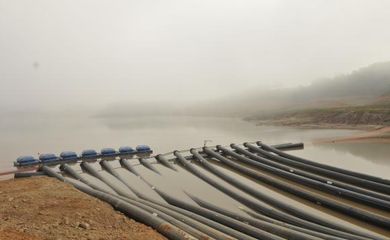Reservoir level rises, but no forecast to shut down thermal power plants


Itaipu Hydroelectric Dam

Despite the rise in the level of the hydropower reservoirs in Brazil this year, the government has not defined yet when will shut down the thermal power plants that have been activated to ensure the energy supply of the country. The use of thermal power plants increases the energy price for consumers by imposing the highest tariff on bills.
In August last year, the Power Industry Monitoring Committee (CMSE) ordered to shutdown the thermal power plants bearing higher costs due to the rise in the levels of the hydropower reservoirs. According to the Ministry of Mines and Energy (MME), it has saved $1.3 billion in the second half of the year and allowed the tariff to be reduced from $1.33 to $1.09 per kilowatt hour.
Since then, there has been no other determination to shut down thermal power plants. During the last CMSE meeting a week ago, they have ordered the National Grid Operator (ONS) to keep track of the hydropower conditions in the national grid, so it can establish the power output level that meets the country's needs.
According to Claudio Sales, president of the Acende Brasil Institute, thermal power plants will be used at least until April when the rainy season ends. "Then eventually they will be able to partially shutdown these plants," he declared. Currently, the thermal power plants generate about 14,000 average megawatts.
The most worrisome water situation is in the Northeast region, where the reservoirs are filled with only 8.1% of their maximum capacity. In this case, the electric power demand in the region is supplied by the use of thermal power plants, wind farms, and also by the energy power received from other regions.
According to the Ministry of Mines and Energy, there are no plans to activate the most expensive thermal power plants of the Northeast because of the lack of water in the reservoirs. "The most expensive thermal power plants will continue to be used only for their original objectives: to eventually strengthen the system, during peak hours; to replace other thermal power plants under maintenance; or to compensate any electrical restriction that impede the supply from other sources," reported the ministry.
The Brazilian energy matrix is called hydrothermal system. This means that the energy consumed in the country is mainly produced by hydropower plants complemented by thermal power plants—powered by oil, natural gas, coal or biomass. When the level of the hydropower reservoirs is too low, the government orders to activate the thermal power plants, to avoid the risk of energy shortage in the country. However, this energy is more polluting and more expensive than the one generated by hydropower, and the cost is passed on to consumers.
Translated by Amarílis Anchieta
Fonte: Reservoir level rises, but no forecast to shut down thermal power plants




